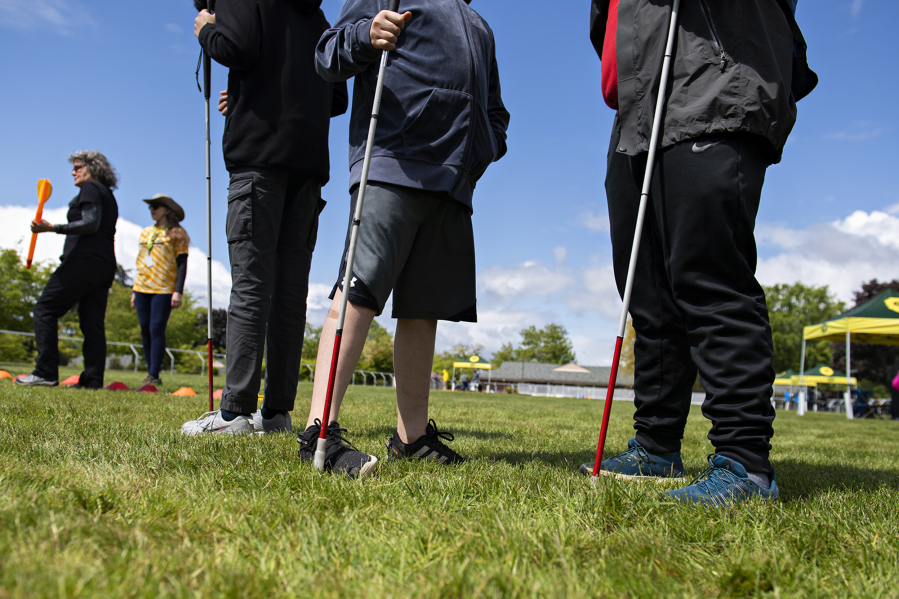Intermittent showers couldn’t cloud high spirits at the Washington State School for the Blind’s annual track meet on Thursday in Vancouver, where more than a hundred students with visual impairments from across Washington and the Pacific Northwest competed in running, jumping, throwing and more.
It’s the first time the event has been held in its intended capacity since 2019. Aside from its setting as a home for competition, however, the event provides a prime example of an intersection of accessibility and community.
“This event allows students to come participate with like peers,” said Jennifer Butcher, who’s worked as a fitness instructor at the school for 23 years. “A lot of times they can only compete against sighted peers, so this gives them the opportunity to have a level playing field.”
“They really shine,” she said. “It’s huge for self-esteem.”
On a typical track, lanes are divided by white lines painted onto the ground: a design that doesn’t account for those who are blind or visually impaired. The track at the Washington State School for the Blind features a built-in metal guide rail along the inside lane, as well as thin guide wires to separate lanes. As competitors launch from their starting spots, they’re able to run alongside the guide wires, holding out their hands to help guide themselves along.
And run they did.
“I thought I did really good, the wires gave me confidence,” said Ryker Register, who had dominated his 50-meter heat just moments prior.
Register, 12, and his mother Jacqueline Johnson had traveled from Tualatin, Ore., to compete and spend time with his peers in the blind and visually impaired community. Since he began to go blind at age 6, he’s been participating in similar running events on smaller scales.
“It’s really cool seeing so many other blind people. This is more like a real track meet. It was cool hearing them announce my name,” he said, gesturing to the nearby gazebo where announcers were stationed, playing music and providing live commentary on the various competitions taking place throughout the day.
Upon registering for the event, students are provided with the option for their event schedule to be in large print or braille, depending on their level of comfort. Details like that, Butcher said, really help to make students and competitors feel less stressed about the event.
Beyond the track, a community
Sophomore Evan Gimmaka said he was particularly excited to immerse himself in such a large community after events in past years had been more limited in their scope.
“See, I really just like to talk to people, and last year it was empty,” said Gimmaka, 16, as he began the initial steps of putting together one of his trademark rubber band bracelets. Though he said he wasn’t as passionate about running, it’s worth noting that he, too, had just finished second in a tightly contested 50-meter heat of his own.
Since starting at the school in 2019, Gimmaka said the experience has provided him with amazing friends and a newfound sense of community.
“I love this school — everyone here, really,” he said. “I love how everyone has a good attitude and will always look to share that with you.”
The event also featured dozens of vendors and representatives from partner organizations including the Northwest Association for Blind Athletes, which holds camps and classes throughout the school year and summertime to introduce students to how they can participate in various sports and physical activities.
“It’s a day of getting together and smiling too much,” said Sean McCormick, the school’s principal.
“We have high standards for accessibility,” he said. “Modeling that for parents is great, it’s a day without barriers. This really gives people an idea for what accessibility looks like if it’s thoughtfully planned.”





